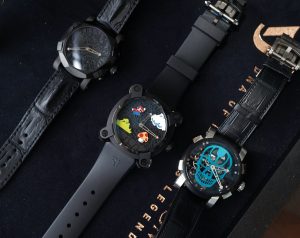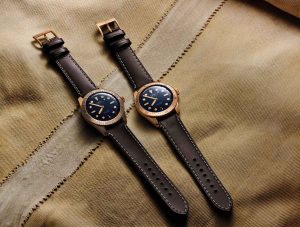Day one of SIHH saw the well-known maisons bringing their shiniest and latest.

A. Lange & Söhne Richard Lange Jumping Seconds with Black Dial
Although technically nothing has changed about this precision-oriented watch, A. Lange & Söhne successfully shook everything up about its Richard Lange Jumping Seconds, which first debuted in 2016, simply by changing its dial. The original 2016 silver dial followed by the 2017 rose gold dial were luxe, but muted. This new white gold case and black dial combination gives it an edge and made it time-relevant, particularly for the younger wearers.
It runs on a calibre L094.1 that still retains its constant force escapement, a remontoire to drive the jumping seconds complication as well as a combination of stop-seconds/zero-reset mechanism that is responsible for the name of the watch itself – each time you pull the crown, the second hand snaps back to zero while you make all adjustments until you you’re done and push the crown back in.
At 39.9mm in diametre and 10.6mm thick, it still is its extremely wearable self, which is another point of awe given the mechanism it holds inside. Readability is also well thought of with printed white Roman numerals that contrast beautifully against the new black dial.
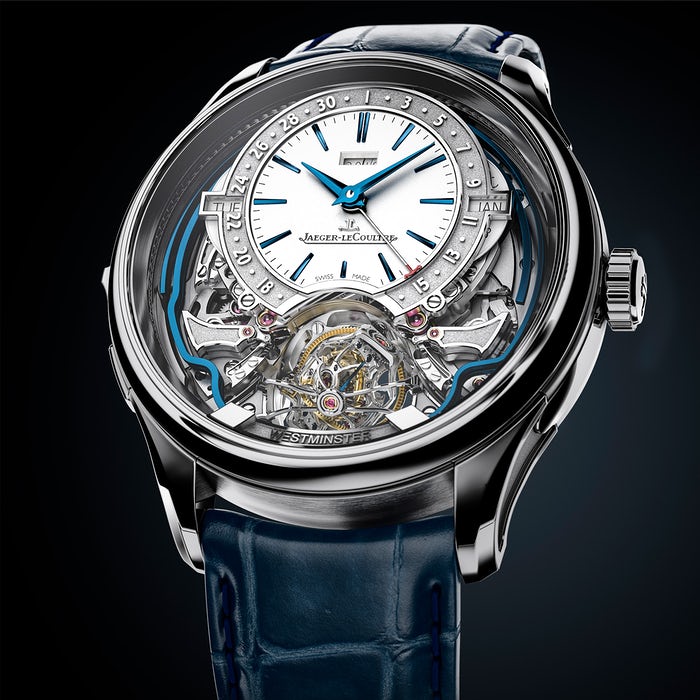
Jaeger-LeCoultre Master Grande Tradition Gyrotourbillon Westminster Perpétual
True to its reputation as a master watchmaker, Jaeger-LeCoultre brought the big guns to the table with one very complex piece of haute horlogerie complete with mechanism that is laid bare on the dial side. This gyrotourbillon is the fifth multi-axis tourbillon from JLC but with a more wearable 43mm x 14.08mm case. Despite the smaller size, it allows for 3 grand complications inside – the minute repeater, the tourbillon and the perpetual calendar mechanism.
The minute repeater you see hammering on the dial with patented crystal gongs isn’t just any minute repeater – it is programmed with four sets of hammers and gongs to play the Westminster carillon, ie, the song of the Big Ben in London. They indicate the quarters between hours and minutes.
The tourbillon is a sight to behold from the front, but turn the watch over and you get an even more compelling view of the governer of the minute repeater, liberating it from friction and centripetal force. Keeping things ticking, literally, is a one-minute, constant-force mechanism that supplies much needed energy to a watch that’s as power –hungry as its tourbillon is multi-axis.
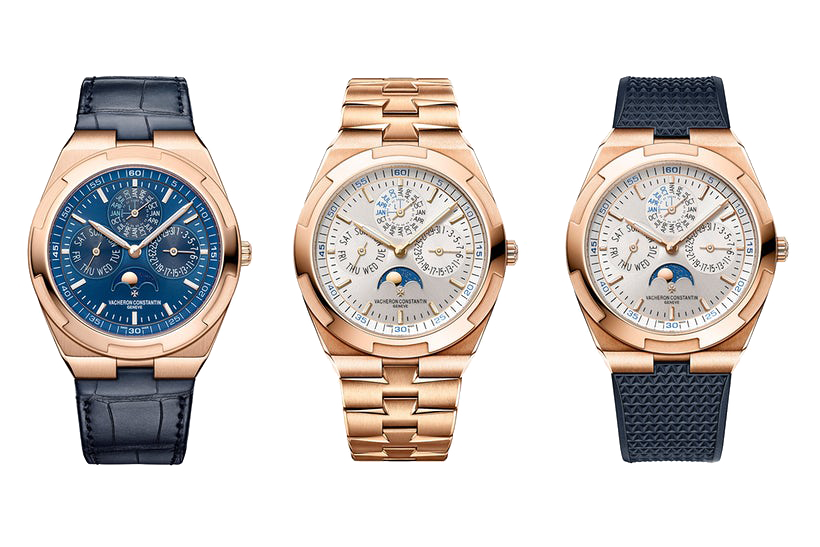
Vacheron Constantin Overseas Perpetual Calendar Ultra Thin
Vacheron Constantin gets sporty with its QP family with two new options: a rose gold model with a blue dial and another with silver dial. Because it’s also a watch that prides itself with straps that are easily swappable, it comes with an addition of a proper gold bracelet.
The blue dial renders things a tad more casual and youthful, which is good, but paired with the rose gold, it becomes great. It is modern in design yet classic in shape, sporty in wear yet professional in vibe.
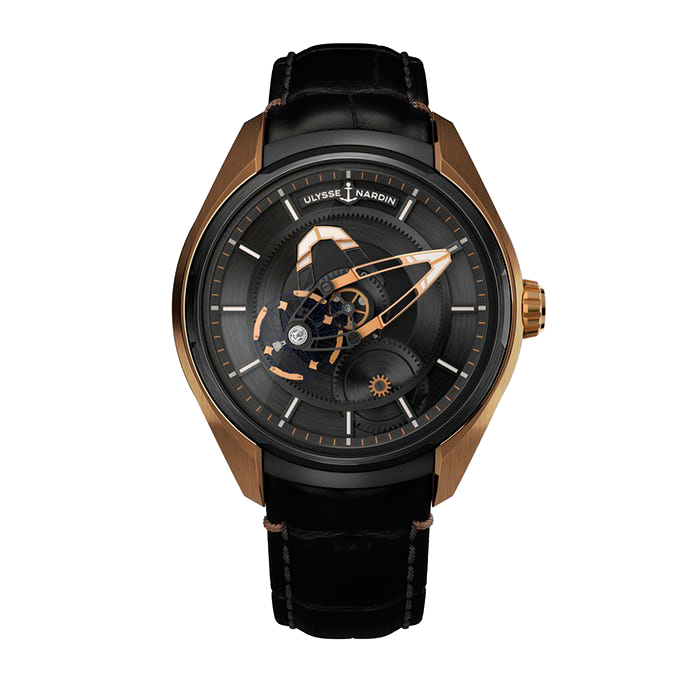
Ulysse Nardin Freak X
Ulysse Nardin has never shied away from being unconventional, being among the first to experiment with silicon component for starters, and an unconventional tourbillon. The latest from it is a tourbillon but wows in the fact that its escapement itself also plays a part of the display.
It comes with a new movement dubbed the UN-230, which is being described as a fusion between the manufacture UN-118 and the Freak Vision UN-250, first introduced last year. It makes reading the time as simple as Freaks of the past, with minutes displayed on the central bridge itself, and the shorter hour anchored to a wheel in the centre of the dial.
The new Freak X is available in a few versions and is priced lower to make it more accessible. All version now come in a smaller 43mm case size from last year’s 45mm.
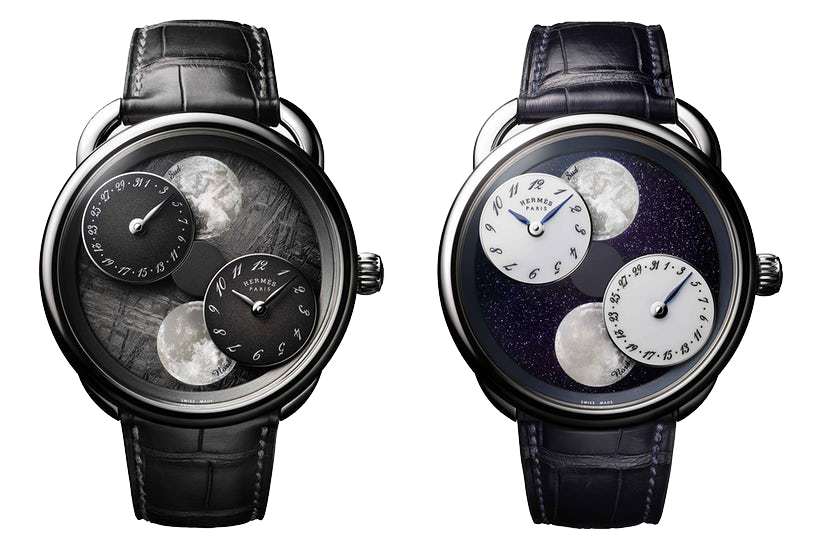
Hermès Arceau L’Heure De La Lune
Staying true to its tradition of whimsical designs and intriguing mechanics, Hermès presents two beautiful moonphase watches that pair a stationary mother of pearl moons with another pair of floating lacquer dials. The latter will make a full circle of the dial every 59 days, covering and uncovering the moons in doing so to indicate the current moon phase in both the southern and northern hemispheres. Here’s where it gets interesting – one of the floating dials also show the hours and minutes while the other counts the date.
They are moved by the Hermès Calibre H1837 called the L’Heure De La Lune’ that was specifically designed with over 100 components to create this display. It is so unusual that Hermès is cerrently pending patent for it.
The moons are the work of artist and designer Dimitri Rybaltchenko, who have named them Pleine Lune, which translates to mean Full Moon. You can choose to have them on your wrist backdropped against a meteorite dial and graduated grey lacquered discs or with an aventurine dial with white lacquered discs. Both are housed in the same 43mm white gold Arceau case and are limited to 100 numbered editions.
(Photos: Respective brands)


